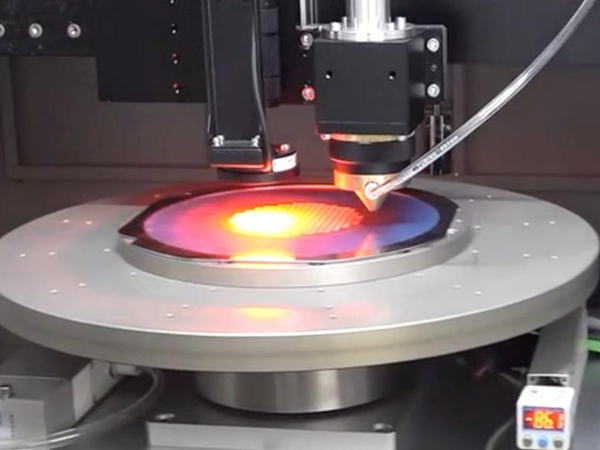Els refrigeradors làser són essencials per garantir la qualitat del tall de les oblies en la fabricació de semiconductors. En gestionar la temperatura i minimitzar l'estrès tèrmic, ajuden a reduir les rebaves, les estellades i les irregularitats de la superfície. Un refredament fiable millora l'estabilitat del làser i allarga la vida útil de l'equip, contribuint a un major rendiment del xip.
Quins són els problemes habituals de tall de les oblies i com poden ajudar els refrigeradors làser?
Les oblies són el material fonamental en la fabricació de semiconductors, i serveixen com a substrats per a circuits integrats i altres dispositius microelectrònics. Normalment fetes de silici monocristal·lí, les oblies són llises, planes i normalment de 0,5 mm de gruix, amb diàmetres comuns de 200 mm (8 polzades) o 300 mm (12 polzades). El procés de producció és molt complex i implica la purificació del silici, el tall de lingots, el polit d'oblies, la fotolitografia, el gravat, la implantació d'ions, la galvanoplàstia, les proves d'oblies i, finalment, el tall en daus d'oblies. A causa de les seves propietats materials, les oblies exigeixen un control estricte sobre la puresa, la planitud i les taxes de defectes, ja que aquestes afecten directament el rendiment del xip.
Reptes comuns del tall de neules
La tecnologia de tall per làser s'ha adoptat àmpliament en el processament de làmines a causa de la seva alta precisió i els avantatges de no tenir contacte. Tanmateix, poden sorgir diversos problemes de qualitat durant el tall:
Rebaves i estelladura: Aquests defectes sovint són el resultat d'un refredament inadequat o d'eines de tall desgastades. Millorar el sistema de refrigeració augmentant la capacitat del refrigerador i augmentant el flux d'aigua pot ajudar a reduir l'escalfament desigual i minimitzar els danys a les vores.
Precisió de tall reduïda: causada per un mal posicionament de la màquina, taules de treball inestables o paràmetres de tall incorrectes. La precisió es pot restaurar millorant el calibratge de la màquina i optimitzant la configuració dels paràmetres.
Superfícies de tall irregulars: El desgast de la fulla, els ajustos incorrectes o la desalineació del cargol poden provocar irregularitats a la superfície. El manteniment regular i la recalibració de la màquina són essencials per garantir un tall suau.
Paper dels refrigeradors làser en el tall de neules
Els refrigeradors làser tenen un paper vital en el manteniment del rendiment i l'estabilitat dels sistemes làser i òptics utilitzats en el tall de les oblies. En proporcionar un control precís de la temperatura, eviten la deriva de la longitud d'ona del làser causada per les fluctuacions de temperatura, cosa que és fonamental per mantenir la precisió del tall. El refredament eficaç també minimitza l'estrès tèrmic durant el tall, reduint el risc de distorsió de la xarxa, estelladura o microesquerdes que poden comprometre la qualitat de les oblies.
A més, els refrigeradors làser utilitzen un sistema de refrigeració per aigua de circuit tancat que aïlla el circuit de refrigeració de la contaminació externa. Amb sistemes de monitorització i alarma integrats, milloren significativament la fiabilitat a llarg termini dels equips de tall de làmines.
Com que la qualitat del tall de les oblies afecta directament el rendiment del xip, la incorporació d'un refrigerador làser fiable ajuda a minimitzar els defectes comuns i a mantenir un rendiment constant. Seleccionar el refrigerador adequat en funció de la càrrega tèrmica i l'entorn operatiu del sistema làser, juntament amb un manteniment regular, és clau per garantir un funcionament estable i eficient.


Estem aquí per a tu quan ens necessitis.
Si us plau, ompliu el formulari per contactar amb nosaltres i estarem encantats d'ajudar-vos.









































































































